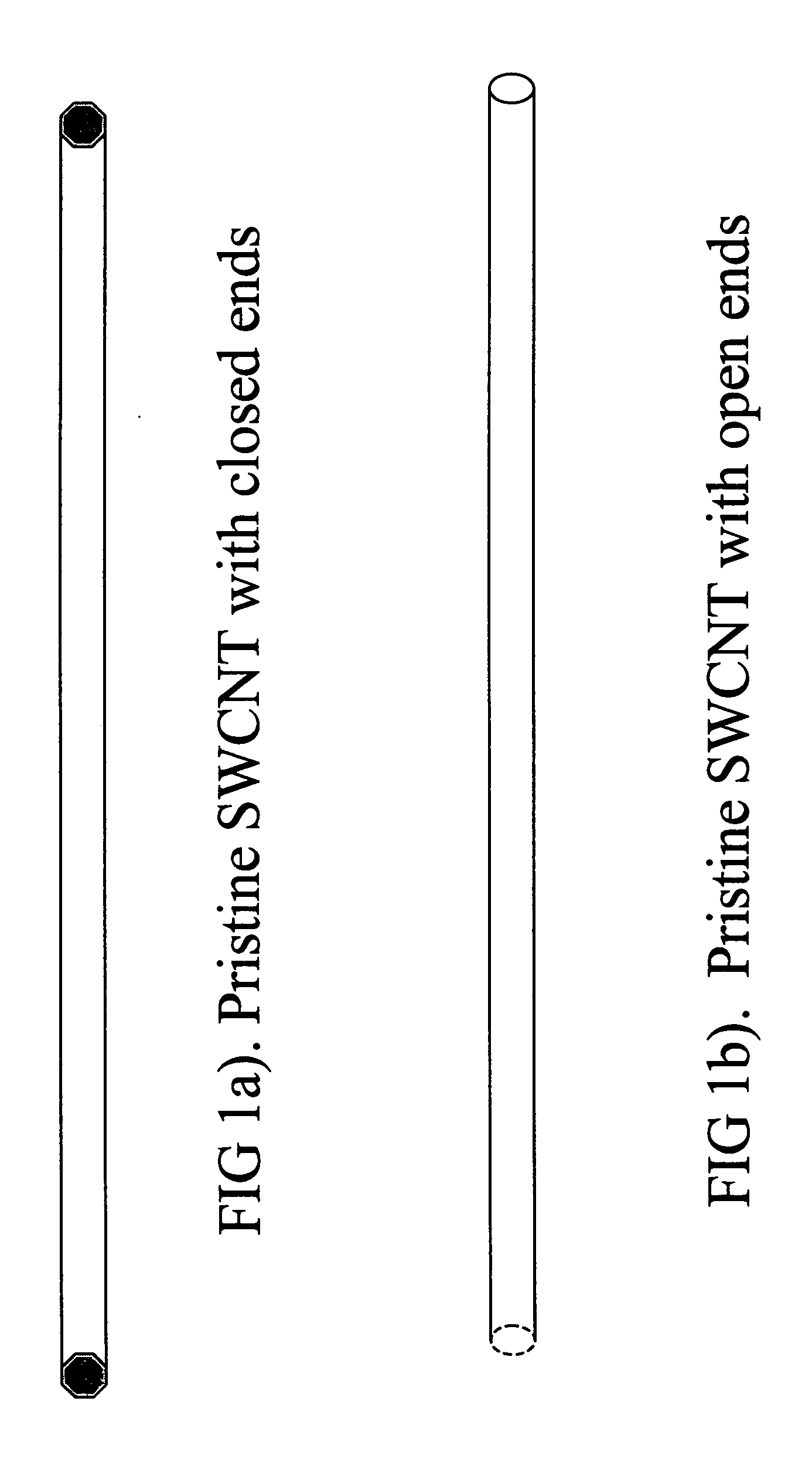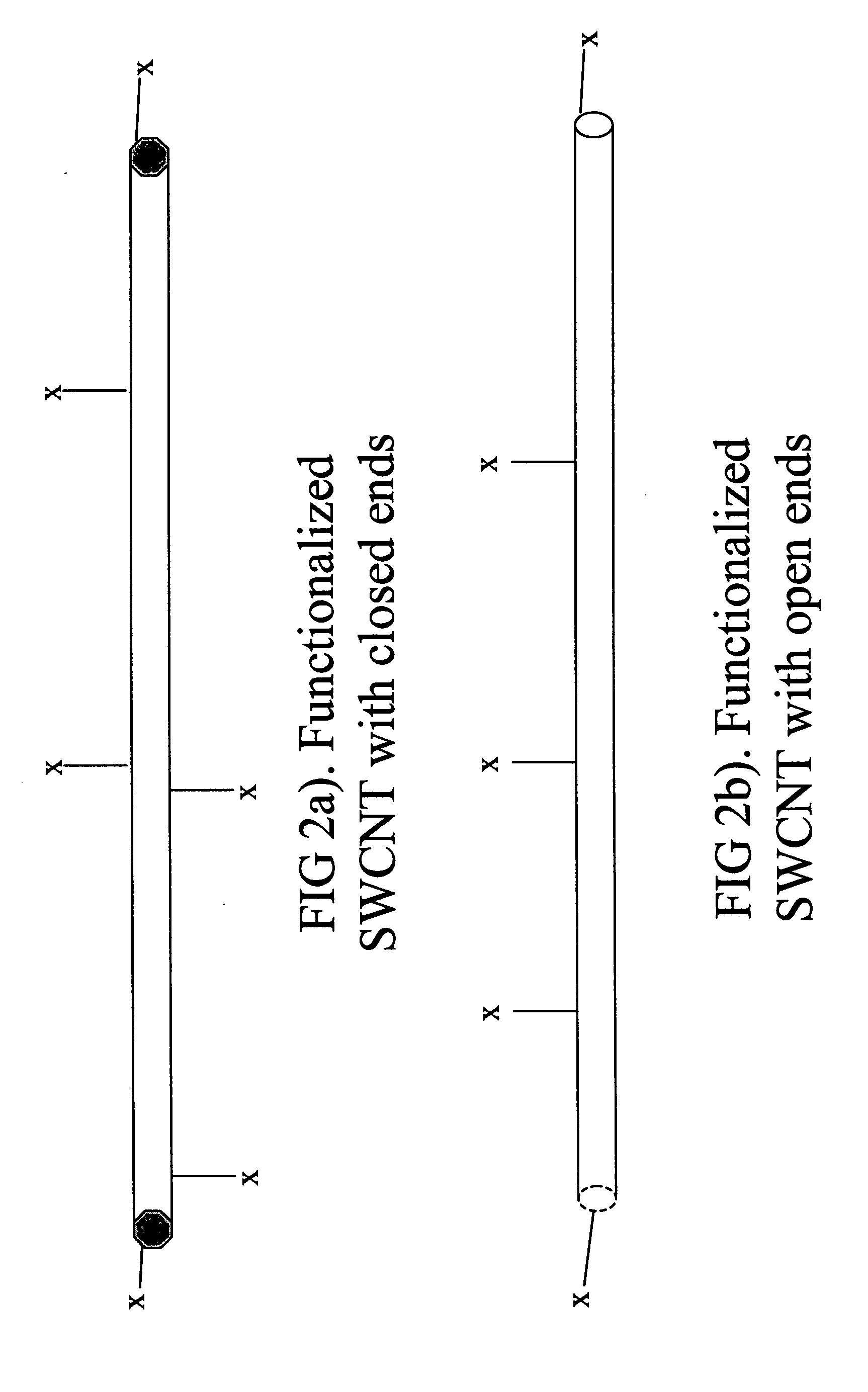Coating compositions containing single wall carbon nanotubes
a carbon nanotube and composition technology, applied in the direction of discharge tube/lamp details, nanoinformatics, transportation and packaging, etc., can solve the problems of organic solvent use not desired, swcnts are extremely difficult to process for various uses, organic solvent use is not desired, etc., to achieve low dispersant loading, low cost, and high swcnts.
- Summary
- Abstract
- Description
- Claims
- Application Information
AI Technical Summary
Benefits of technology
Problems solved by technology
Method used
Image
Examples
example 1
[0129] A coating composition comprised of 1000 ppm (1 mg / mL=0.1 wt %) P3 SWCNTs with 2-2.5 atomic percent carboxylic acid functionalization and the balance of deionized water was prepared in a glass container. Mechanical and acoustic energy were applied to the dispersion. The resultant dispersion is opaque when viewed in the glass container. Over several months, the dispersion was found to remain stable and the dispersion quality was judged as Excellent as defined in Table 2 above.
example 2
[0131] A coating composition comprised of 2000 ppm (2 mg / mL=0.1 wt %) P3 SWCNTs with 2-2.5 atomic percent carboxylic acid functionalization and the balance of deionized water was prepared in a glass container. Mechanical and acoustic energy were applied to the dispersion. The resultant dispersion is opaque when viewed in the glass container. Over several months, the dispersion was found to remain stable.
example 3
[0132] The dispersion in Example 2 was used to make a conductive coating. TX-100 nonionic surfactant was added at 25 wt % based on the weight of the SWCNTs as a coating aid. The coating composition was applied onto a 100 μm thick polyester substrate and dried at 80° C. The dried coating contained 64.6 mg / m2 carboxylic acid functionalized SWCNTs and 16.5 mg / m2 TX-100 and had a surface resistivity as measured with a 4-point probe equal to 2300 Ω / square. The conductive layer had a transparency of 81.5% at 535 nm wavelength.
PUM
| Property | Measurement | Unit |
|---|---|---|
| outer diameter | aaaaa | aaaaa |
| outer diameter | aaaaa | aaaaa |
| diameter | aaaaa | aaaaa |
Abstract
Description
Claims
Application Information
 Login to View More
Login to View More - R&D
- Intellectual Property
- Life Sciences
- Materials
- Tech Scout
- Unparalleled Data Quality
- Higher Quality Content
- 60% Fewer Hallucinations
Browse by: Latest US Patents, China's latest patents, Technical Efficacy Thesaurus, Application Domain, Technology Topic, Popular Technical Reports.
© 2025 PatSnap. All rights reserved.Legal|Privacy policy|Modern Slavery Act Transparency Statement|Sitemap|About US| Contact US: help@patsnap.com



